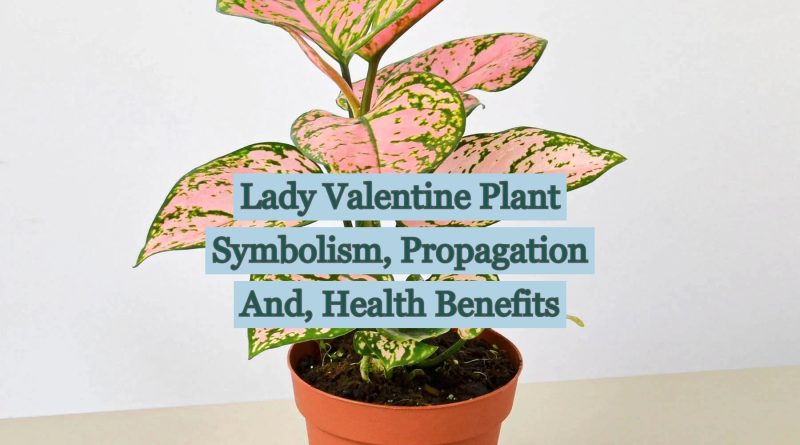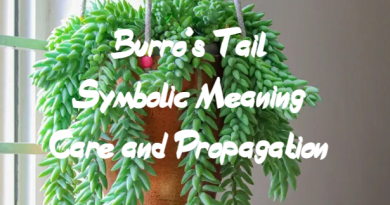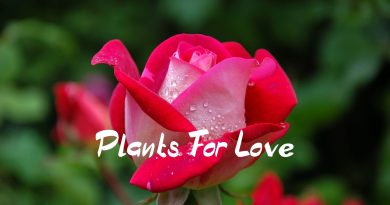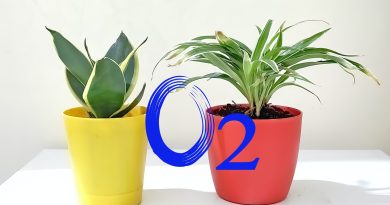Lady Valentine Plant: Symbolism, Propagation and Health Benefits
Lady Valentine Plant also known as Aglaonema commutatum or Chinese evergreen is a popular indoor houseplant that is known for its attractive foliage and ease of care. It is native to tropical regions of Asia. Its name comes from Greek words. Algos means shinning and nema means thread.
It has an elliptic, shiny, dark green, waxy lance-shaped leaves with wavy margin on the short stems. This plant typically has glossy green leaves with silver or white variegation. It reaches 4 to 8 inches long and 2 to 3 inches wide.
Symbolism of Lady Valentine Plant
Lady Valentine Plant is often used as a symbol of good luck, prosperity and peace. It is believed to bring good fortune and wealth to the home, and it is often given as a gift to friends and family members to bring good luck and prosperity. It also balances the water element in a room and clears away stress.
Health Benefits
Some of the health benefits of aglaonema include:
Air purification: Aglaonema is known to remove harmful toxins such as formaldehyde, benzene, and trichloroethylene from the air.
Improved air quality: Aglaonema can help to increase humidity levels in a room, which can help to alleviate symptoms of dry skin, sore throats and dry coughs.
Stress relief: Having plants in a room can help to reduce stress and promote feelings of well-being.
Improved sleep: Studies have shown that having plants in a bedroom can lead to better sleep quality.
Good for asthma and allergies: Aglaonema is an ideal plant for people with asthma or allergies because it helps to purify the air and can remove harmful toxins.
Propagation of Lady Valentine Plant
There are several methods to propagate Aglaonema, including stem cuttings, air layering, and division. And certain materials are required for propagation.
Materials
– Healthy parent plant
– Rooting Hormone
– Pot of soil
– Plastic bag
Propagation Method
– Stem Cutting Method
1. Start by selecting a healthy, mature Aglaonema plant. The best time to propagate is during the growing season, which is typically in the spring or summer.
2. Cut a stem just below a leaf node (the point where a leaf grows out of the stem) using a sharp, clean pair of scissors or a knife. The stem should be at least 4 inches long.
3. Remove the lower leaves from the stem, leaving only the top 2-3 leaves.
4. Dip the cut end of the stem in rooting hormone powder to encourage root growth.
5. Fill a small pot with a well-draining potting mix, such as a mixture of peat moss and perlite.
6. Make a hole in the center of the potting mix and insert the stem.
7. Firmly press the potting mix around the stem to secure it in place.
8. Water the potting mix until it is moist but not saturated.
9. Cover the pot with a plastic bag or a plastic dome to create a mini-greenhouse environment. This will help to keep the humidity high and prevent the cutting from drying out.
10. Place the pot in a bright, warm location out of direct sunlight.
11. Keep the potting mix moist, but not waterlogged.
12. After 2-3 weeks, roots should begin to form. Once the cutting has developed a good root system, it can be transplanted into a larger pot or into a garden bed.
– Air layering Method
Air layering is a process of rooting a stem while it is still attached to the parent plant.
1. Locate a stem with at least one leaf node and make a small incision in the stem.
2. Dust the cut with rooting hormone powder and wrap the wound with a moist sphagnum moss.
3. Cover the moss with plastic wrap to create a humid environment. In a few weeks, roots will form, and new growth will appear.
4. Once the cutting has developed a good root system, it can be transplanted into a larger pot or into a garden bed.
-Division Method
Aglaonema can be propagated by dividing the root ball of an established plant.
1. Carefully remove the plant from its pot.
2. Divide the root ball into smaller sections, making sure each section has at least one stem and one set of leaves.
3. Replant the divisions in separate pots and water well.
4. Cover the pot with a plastic bag or a plastic dome to create a mini-greenhouse environment. This will help to keep the humidity high and prevent the cutting from drying out.
5. Place the pot in a bright, warm location out of direct sunlight.
6. Keep the potting mix moist, but not waterlogged.
7. After 2-3 weeks, roots should begin to form. Once the cutting has developed a good root system, it can be transplanted into a larger pot or into a garden bed.
Care guide
Here are some tips for caring for an Aglaonema plant:
Potting: Plant this plant in a well draining potting soil or potting mix. Try to mix pertile into soil before planting.
Light: Aglaonema can tolerate low light levels, but the variegation of its leaves may become less pronounced if left in the shade for extended periods. To ensure vibrant and colorful leaves, place the plant in a location with bright indirect light. Avoid direct sunlight, as it can cause scorched or discolored leaves.
Water: Aglaonema plants prefer consistently moist soil, but do not tolerate standing water. Allow the top inch of soil to dry out before watering again. To properly care for your aglaonema plant, wait until the top inch of soil is dry before watering. Signs that the plant needs water include wilted leaves. When watering, ensure that water seeps out of the pot’s drainage holes, but take care not to over-water as this can lead to root rot or yellowing leaves. Additionally, be sure to remove any excess water that may collect on the surface of the soil after watering.
Humidity: Aglaonema plants prefer high humidity, so consider placing a humidifier nearby or using a pebble tray to increase humidity around the plant. They can adapt to various humidity levels and still flourish as houseplants.
Temperature: Aglaonema plants prefer temperatures between 60-90 degrees Fahrenheit, similar to tropical environments. Avoid placing the plant near drafty windows or air conditioning vents.
Fertilizer: Aglaonema plants do not require frequent fertilization. Feed the plant every 4-6 weeks during the growing season with a balanced, water-soluble fertilizer.
Pruning: Aglaonema plants do not require frequent pruning, but you can remove yellow or damaged leaves as needed.
Pests: Aglaonema plants are generally resistant to pests, but can be susceptible to mealybugs, spider mites, and thrips. Keep an eye out for these pests and treat them promptly if spotted.
Overall, Aglaonema is a very hardy and low-maintenance plant which is ideal for indoor gardening. With proper care, it can thrive and provide you with beautiful foliage for years to come.
Toxicity
Aglaonema plants are toxic to animals, so it’s important to keep them out of reach of pets. The plant contains calcium oxalate crystals, which can cause burning, irritation and difficulty swallowing.
Common Problems with Lady Valentine Plant
Aglaonema is generally a low-maintenance plant, but there are some common problems that can arise:
Yellowing Leaves: This is often a sign of over-watering or poor drainage, leading to root rot. Be sure to water your Aglaonema only when the soil is dry to the touch and make sure the pot has adequate drainage holes.
Brown Tips or Edges: This can be a sign of low humidity or dry air. Increase humidity levels around the plant by misting it regularly or placing a humidifier nearby.
Stunted Growth: This can be due to insufficient light or nutrients. Make sure the plant is getting enough light, and consider fertilizing it during the growing season.
Pests: Aglaonema can be susceptible to pests such as spider mites, mealybugs, and scale insects. Check regularly for signs of pests and treat promptly with an appropriate insecticide.
Leaf Drop: This can be a sign of stress caused by changes in temperature or humidity. Try to keep the plant in a stable, consistent environment to prevent stress.
In Conclusion
Aglaonema is a great choice for an indoor plant, it is easy to care for and will thrive in a variety of indoor environments. It is also known to improve air quality, making it a functional as well as an ornamental addition to any indoor space.
Read More:
Heart Shaped Plants For Valentine’s Gift
Lucky Indoor Plants For Zodiac Signs




